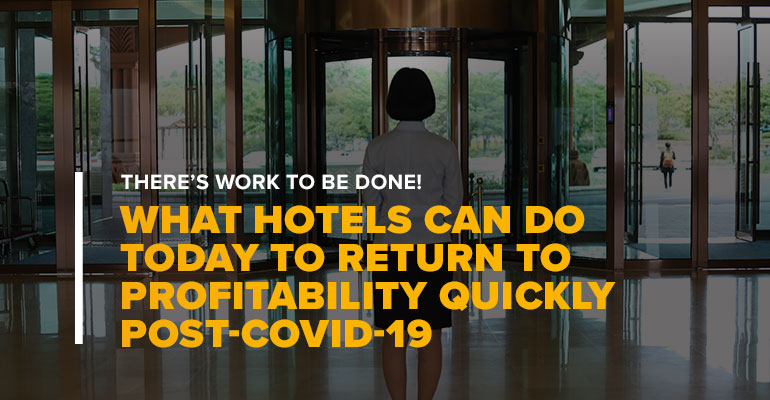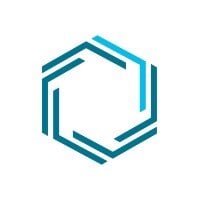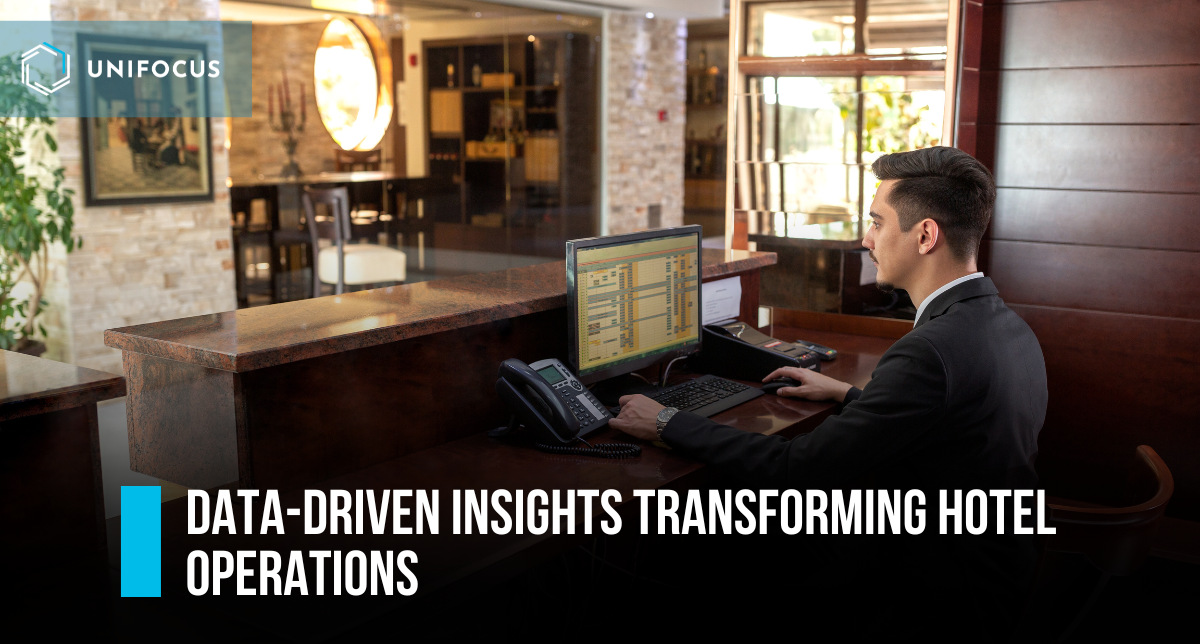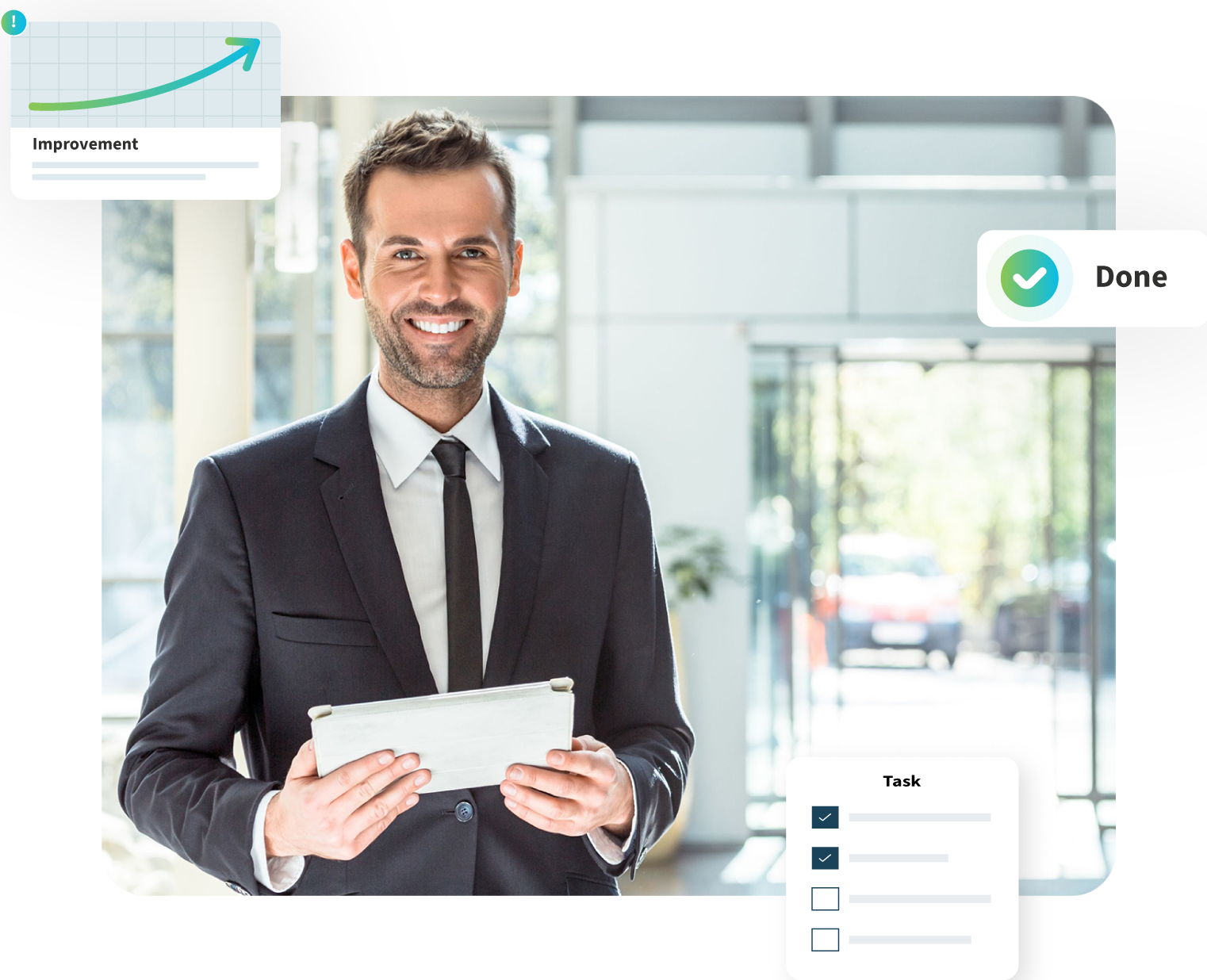In the face of COVID-19 and the abrupt declines in business, the hospitality industry moved rapidly to triage efforts to minimize losses: reducing staff through furloughs and layoffs, suspending operations at hardest hit properties, and delaying renovations or other capital investments.
Under these circumstances, it can be challenging to transition from immediate business preservation to focusing on operational decisions to support reopening and longer-term success. That said, industry executives have consistently pointed to the end of May 2020 as a common goal for reopening hotels to transient business. Even if circumstances push this timing to early summer, hotels and restaurants must start thinking now about the logistics of reopening and the operational challenges of a market environment that has shifted significantly due to travel restrictions and sheltering-at-home.
What Can We Expect?
This is where it gets tricky. Even the most seasoned veterans who navigated through previous crises say they have never experienced anything like what the industry is facing today with the impact of COVID-19.
Rebounds took some time after major U.S. market disruptions of the recent past. A look at 9/11 and the collapse of Lehman Brothers/2008 recession shows that ADR dropped rapidly following each event and recovery took twice as long as the decline in both cases.
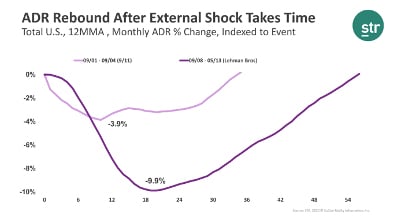
We can also get clues from previous epidemics. Following the Zika and SARS epidemics, occupancy rebounded quickly, while ADR lagged. Specifically, in the case of SARS – a similar situation to COVID-19 – occupancy was back within a year of restrictions being lifted, but ADR took a full 4 years to recover!
While it’s difficult to predict how quickly travelers will re-engage when we are through the COVID-19 crisis, previous experience tells us we can be certain that occupancy will rebound more quickly than ADR, leaving hotels to find ways to bridge the gap in profitability.
What Can We Do Today?
There is work that can be done today to set the stage for closing the profitability gap more quickly.
Hoteliers have a unique opportunity to do a “zero-based” review of how work gets done in their properties and will need to do this given the significant differences they will face as they reopen.
Existing work standards, built based on average volume levels from times of much higher occupancy, are not adequate to meet operational and financial needs at much lower volumes. Now is the time to redefine work standards while considering ways that roles, positions, or tasks can be combined, or staff can be cross-trained and cross-utilized. Additionally, fixed management positions need to also be thoroughly assessed to ensure that there is measurable value being created by this overhead.
In doing this, hoteliers must keep in mind some unique factors properties will contend with post-COVID-19. For example, properties need to rethink cleaning procedures to not only meet cleanliness levels required to keep guests and staff safe, but also to provide a clear demonstration to guests that these procedures are actually taking place. Things like changing the frequency of deep cleaning in public areas, supplemented by a much higher frequency of spot cleaning by all staff across the property and throughout the day.
Additionally, with children at home and many summer programs already cancelled, staff are likely to have different scheduling needs during the first few months after the market reopens. This may mean approaching shifts differently and/or working with staff and unions to change minimum and maximum shift lengths. For example, some staff may find it helpful to work 12-hour shifts, alternating with other colleagues who also have children so they can help each other with childcare through the summer months.
Given the fact that occupancy will grow faster than ADR, revenue also needs to be a component of productivity. This can be accomplished by defining flexible standard sets that adjust based on ADR, which may also require phased opening of some public areas or services to limit the scope of work required until rates rebound.
Finally, based upon the opportunities you have identified to cross-utilize or combine roles, define opportunities and plans for cross-training staff and ramp up training that will enhance the knowledge and skills of your managers. Even furloughed managers may be interested in online training opportunities over the next few weeks, giving you the opportunity to engage them positively as you work through plans to bring them back to work.
Taking these steps today will require hoteliers to transition focus from triage to operations while providing hotel properties with the foundation needed to reduce the profitability gap as occupancy grows and ADR rebounds.

